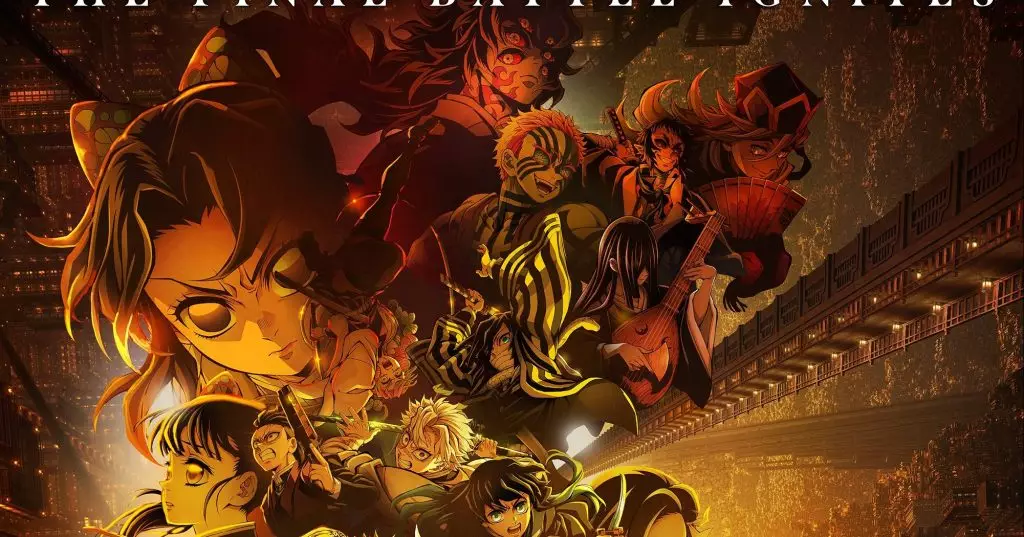In recent years, anime films have begun to carve out a more significant presence in the American box office, challenging Hollywood’s traditional dominance. While major blockbuster releases like Warner Bros.’ “Beetlejuice” once commanded massive openings, this year’s competition has been noticeably subdued, making space for niche titles with passionate fanbases to dominate. “Demon Slayer: Infinity Castle” exemplifies this shift—an anime movie driven not by studio hype or A-list stars, but by a dedicated, rabid following that prioritizes fandom loyalty over broad mainstream appeal.
What is striking is how the success metrics are evolving. Unlike Hollywood’s reliance on multi-week, mass-market rollouts, anime films are often frontloaded, relying heavily on early presales and devoted fans eager to see their stories on the big screen. This strategic shift demonstrates a different path to profitability—one driven by niche markets, regional fervor, and culturally specific appeal. American distributors and exhibitors may need to recalibrate expectations, understanding that these titles do not distribute their wealth over time but instead spike early and recede shortly thereafter. As such, “Infinity Castle” isn’t just a film; it’s a blueprint for how Hollywood could grow its international and niche market segments without the traditional blockbuster model.
The Power of Cultural Niches in a Globalized Market
The remarkable international performance of “Infinity Castle” underscores a vital point: anime’s global appeal is no longer limited to Asia. The film has already amassed close to $193 million worldwide, with three-quarters of that sum coming from Japan. But the Southeast Asian markets almost doubled the record previously held by “Mugen Train,” which itself was a historic success. This phenomenon illustrates how targeted regional marketing and culturally resonant narratives can outperform broad Hollywood attempts to dominate global screens.
This success begs the question: Is Hollywood underestimating the power of culturally specific storytelling? While the dominant entertainment paradigm tends to favor universal themes packaged for mass consumption, anime’s rise suggests that specialized, deeply rooted narratives can succeed globally, provided they find the right audience. The fact that “Infinity Castle” opened to a $17.5 million debut in Southeast Asia alone, surpassing many Hollywood animated films, demonstrates that market segmentation should be prioritized over broad-spectrum blockbuster strategies. Hollywood could learn a lot from this approach—if it is willing to accept a more segmented, yet highly profitable, model.
The Future of Animation and Fan Engagement
Another noteworthy insight is the nature of anime’s engagement strategy. Advance presales for “Infinity Castle” are breaking records, reflecting a loyal fanbase that consumes content proactively. Early screenings in IMAX and other premium formats further reinforce that this audience isn’t just passively watching; they’re eager to experience it in the most immersive ways possible. Their enthusiasm creates a ripple effect, driving excitement and generating word-of-mouth momentum that can catapult a film into blockbuster territory—if only temporarily.
This trend raises a crucial point about how Hollywood might leverage fan engagement. For years, the industry has prioritized big stars and franchise-building as guarantees of success. But the anime model emphasizes authenticity and passionate communities that turn up early and in large numbers. Hollywood’s failure to emulate this grassroots enthusiasm is costly; it underestimates the power of dedicated audiences who are willing to support a film long before critical reviews or widespread marketing. “Infinity Castle” exemplifies this dynamic—showing that when a story resonates deeply with viewers, it can ignite sustained interest and set new records without relying on overexposure or blockbuster machinery.
Implications for Hollywood and the Broader Entertainment Industry
The rise of titles like “Demon Slayer” signifies a seismic shift in how entertainment success is measured. Hollywood’s traditional model of sprawling summer blockbusters is increasingly being challenged by more targeted, culturally rich storytelling that speaks directly to eager fanbases. While this might seem to threaten Hollywood’s dominance, it also offers an opportunity: diversify content, embrace niche markets, and focus on building authentic connections with global audiences.
In the center-right liberal context, this evolution presents a compelling argument for pragmatic adaptation—balancing cultural authenticity with commercial viability. Hollywood need not abandon its blockbuster ambitions but should recognize that the future belongs to those willing to innovate, leverage international markets, and prioritize community engagement. “Infinity Castle” demonstrates that passion-driven content can punch above its weight, transforming from a niche hit into a cultural phenomenon—if the industry is willing to listen to its audience and adapt to new consumption patterns.

